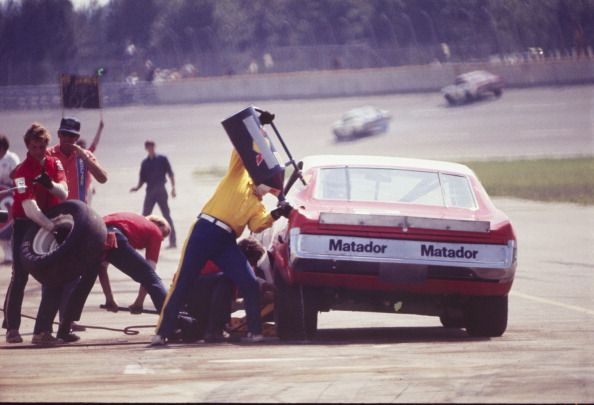- Charlotte Motor Speedway wasn’t the only track to schedule a 600-mile race in NASCAR history.
- Michigan International Speedway scheduled a 600-miler of its own for the first year of NASCAR racing there in 1969.
- Michigan’s 600-mile experiment, however, was a short-lived one.
Charlotte Motor Speedway opened its gates in 1960 with an audacious plan—a 600-mile marathon for NASCAR Cup cars, testing driver and machine at a distance that had never been approached.
It was meant to be a big kickoff for Bruton Smith’s new speedway in the heart of NASCAR country. It wasn’t a roaring success, to say the least. Portions of the track came up during the race, and teams put screens on the front of their cars in attempts to keep chunks of debris from penetrating the radiators. Joe Lee Johnson won the race —a 5-hour, 34-minute marathon—by four laps.
That first 600-miler wasn’t a classic, but it proved that the “bonus” 100 miles beyond NASCAR’s more-or-less standard 500-mile races could work, and Charlotte’s May race became famous as the sport’s longest.
CMS wasn’t the only NASCAR track to venture into this virgin territory, however.
Detroit entrepreneur Larry LoPatin was making big noise in auto racing circles in the 1960s. He built two-mile Michigan International Speedway west of Detroit as the shining star in his American Raceways Inc., a group that would include tracks in Georgia, Texas and California.
LoPatin spared no expense. He brought in designer Charles Moneypenny, who had been the key architect of Daytona International Speedway a decade before, to map Michigan’s race course. International driving star Stirling Moss consulted on the design of the Michigan road course.
The track’s first NASCAR event was held June 15, 1969, and it is remembered as one of the best NASCAR races of the decade. The wide and fast track was the perfect landscape for the NASCAR stockers of that era, and Cale Yarborough and LeeRoy Yarbrough thrilled a huge crowd as they waged a fierce battle for the lead over the last half of the race. Their cars touched on the last lap before Yarbrough crashed in the fourth turn, leaving Yarborough to take the checkered flag.
Later that year, LoPatin added another slice of ambition to his sparkling new venue. The second NASCAR race at MIS (now Michigan Speedway) was scheduled Aug. 10, and it was labeled the Yankee 600 – a 600-mile event, 300 laps over the two-mile course.
Bad weather, a plague that would continue to hamper LoPatin’s portfolio of tracks, hit the Michigan track on race day. There were two long rain delays during the race. Finally, the checkered flag was waved after the completion of only 165 laps, 78 of them under caution. David Pearson, that year’s champion, won by three seconds. After the race, Pearson insisted that his car was so good that he would have won at 600 miles, but fans were cheated of any drama that might have occurred because of the weather.
The ballyhooed Yankee 600 became the very messy Yankee 330, and Charlotte Motor Speedway retained its position as the only NASCAR track to host a 600-miler.
By the next August (1970), Michigan’s second yearly race had been renamed the Yankee 400, and the 600-mile experiment was over.
In a few years, LoPatin’s racing dreams also were over. Many of the races at his tracks were hammered by poor weather and, despite Michigan’s early successes, American Raceways Inc. filed for bankruptcy.
Roger Penske bought the Michigan track at auction in 1973, and it later was moved under the NASCAR umbrella. Sunday’s race will be the 106th Cup race at the speedway.
Read the full article here



